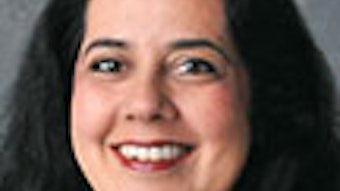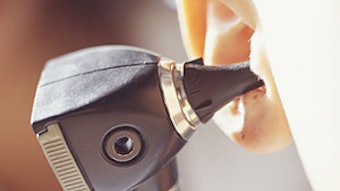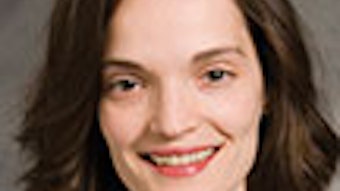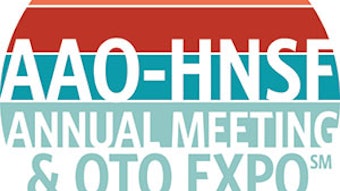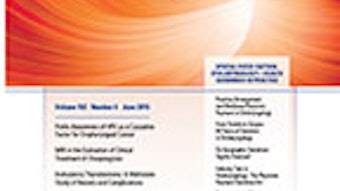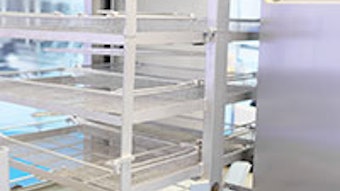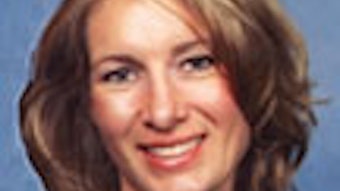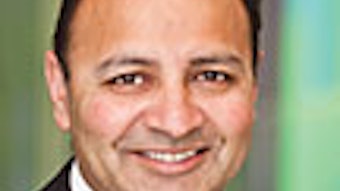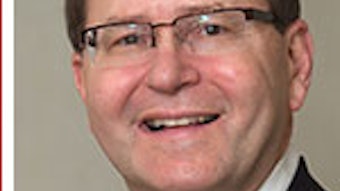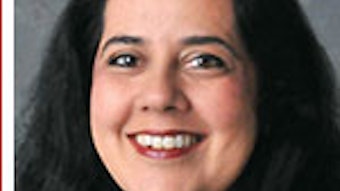Cleft lip and palate surgery in CebuExpanded from the print edition
Although I was not a stranger to large walk-in clinics before arriving in Cebu, our screening day was nevertheless an eye-opening experience. More than 200 patients, plus their families and sponsors, were packed like sardines into the hospital rooftop gymnasium-turned-waiting-room.
By Jamie L. Funamura, MD, AAO-HNSF Humanitarian Efforts Grantee
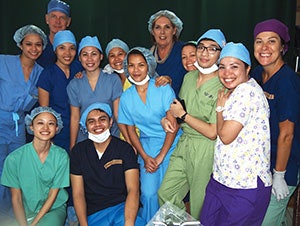 One of our Australian-American-Filipino OR teams. In the middle are Filipino scrub technician/trainees. Jamie L. Funamura, MD, is at the bottom left.
One of our Australian-American-Filipino OR teams. In the middle are Filipino scrub technician/trainees. Jamie L. Funamura, MD, is at the bottom left.Although I was not a stranger to large walk-in clinics before arriving in Cebu, our screening day was nevertheless an eye-opening experience. More than 200 patients, plus their families and sponsors, were packed like sardines into the hospital rooftop gymnasium-turned-waiting-room. Cebu City is a large metropolitan area of more than 800,000 people on Cebu Island, one of the central provinces of the Philippines. The month of March here is warm and humid, and only the occasional sea breeze filtered through the crowd in our makeshift waiting area.
I was at the Miller Adventist hospital in the center of Cebu City with the Operation Restore Hope (ORH) team. ORH is a long-standing joint Australian-American-Filipino humanitarian venture that has been providing care for children with cleft lip and palate in the Philippines via twice-yearly surgical trips for more than two decades. My mentor, Craig W. Senders, MD, was one of four senior surgeons on the trip. Despite the long-term dedication of the many providers and the local Rotary Club—or perhaps precisely because of such dedication—each screening clinic draws more patients with cleft lip and palate than the last.
Despite the heat, the crowd waited patiently to be directed down to the air-conditioned clinic space as the local Filipino Rotarians waded through the registration process. After all, what is a long morning and some heat compared to the days it took to journey from neighboring islands, the months since the last ORH trip was regretfully cancelled to prioritize disaster relief efforts in the wake of natural disasters in late 2013, and the years that some of these children and young adults with cleft lip and palate have waited to have surgery?
In many ways, my experience in the Philippines with ORH was exactly how I imagined it would be: a highly rewarding trip, filled with a new appreciation of Filipino culture and a sense of accomplishment as our team sent nearly 92 patients home with newly repaired cleft lips and palates. But just as often I felt insignificant, as it became more apparent to me that the patients we were treating represented a mere tip of the iceberg. Many patients who had traveled great distances to attend our screening clinic had to be turned away. Faced with limitations of time and resources, difficult questions would arise. Who should have greater priority in undergoing surgical repair of a cleft palate: a 15-month-old before compensatory speech patterns need to be unlearned or a 25-year-old who has been waiting for a team to take the extra effort and risk post-operative failure in correcting her wide cleft? Compared to my cleft team experiences back home at UC Davis Medical Center, the difference in patient-to-provider ratios was stark. At home we would surround the patient with an army of specialists; here in Cebu the number of patients far surpassed that of our Australian-American-Filipino team members.
Laden with more questions than answers surrounding surgery in a setting of limited resources, I found comfort in the familiar: the surgical steps that were the same to me in Cebu as in Sacramento, the same expressions of surprise and happiness on parents’ faces when they saw their children after cleft lip repair. Re-centering oneself around the individual patient and the goal at hand is a mindset I believe will serve us equally well at home as overseas: despite the challenges of healthcare reform and Medicare reimbursements that swirl around us, even if I am a simple cog in a big intricate wheel, there should always be solace in caring for the individual patient of mine.
For that reminder, I am indebted to our wonderful patients in Cebu. I am also extremely grateful to have been able to join the equal parts hard-working and fun-loving Operation Restore Hope team, and to the AAO-HNSF Humanitarian Efforts Committee for bestowing a travel grant to help make such participation possible.


